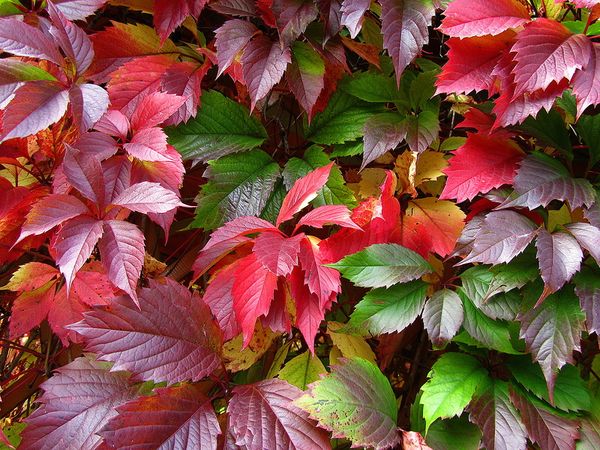Why plant wild grapes if there is barely enough space on the plot for varietal, cultivated? This question disappears by itself when the view is a hedge of primordial wildness and power, which is enough strips of land near the fence to shelter the roots. And nothing more - no room for growth, no soil fertility.
However, the division into zones with pergolas and walls of climbing crops is needed even more. And wild grapes for this purpose is most welcome.
Table of contents
Characteristics and description of wild grapes
In the wild grapes conquers at first sight leaf beauty. In the summer they are deep green, in the spring and in the fall they are all shades of red (from pale and dark pink to maroon).
They are the main tool for assault on the peaks, because the wall of leaves is held tenaciously by all significant masses even on an absolutely smooth vertical wall.
Various types and varieties of wild grapes are driven out of the season up to 5 meters or more, the total length of the shoots can reach more than one ten meters. Landscapers are widely used by this property to decorate the facades of houses and other buildings.
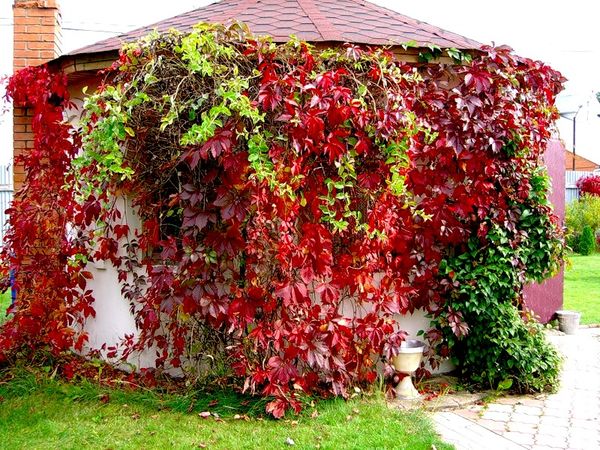
The draping of imitations of castles, as well as pergolas, arbors and other landscape gardening constructions is no exception.
Wild grape varieties to plant on the fence
Culture is a deciduous liana deciduous vine with all the distinctive and useful qualities characteristic of the Vinogradov family.
- Leaves Pyatisletus (virginian) type of maiden grapes are finger-composite, of five leaf plates with a leathery glossy (but not glossy) surface and serrate-toothed edge. Each oval plate is connected in the center with a common scape. Therefore, in the period of leaf fall, the leaf disappears from the shoot either entirely or segment-by-segment.
- Have Triostra (Ivy) type of leafy plates whole. Deep cuts cut through the plate incompletely, making it look like a three-toed footprint of a waterfowl with narrow membranes.
The flowers of both species are collected in loose brush, small, pyatilepestkovye, the color of tea with milk or lighter, not of aesthetic value. But during the flowering period, bees continuously circle around the wall of girlish grapes, creating an atmosphere of comfort and peace around.
- Five Leaf Wild Grapes
- Trio
At the end of the summer, black berries are tied with a bluish “foggy” bloom - a loose brush forms. Tart taste berries, inedible for humansbut loved by birds.
Why plant
Sometimes, on a plot of wild grapes suddenly appears out of nowhere. This birds sow seeds around.But more often it is planted consciously for beauty and benefit.
Any kind of beauty is suitable for beauty. Particularly decorative variety of girlish grapesStar shovers"With a marble white and green color of leaves, at the end of the season changing to a mosaic of different shades of pink and red.
As for the benefits, the wild varieties are indispensable for weaving fences that go out into the street with heavy traffic.
Such a wall protects:
- from dust and wind;
- from noise;
- from someone else's annoying curiosity.
And absolutely no matter what the land under the fence - Any culture will do.
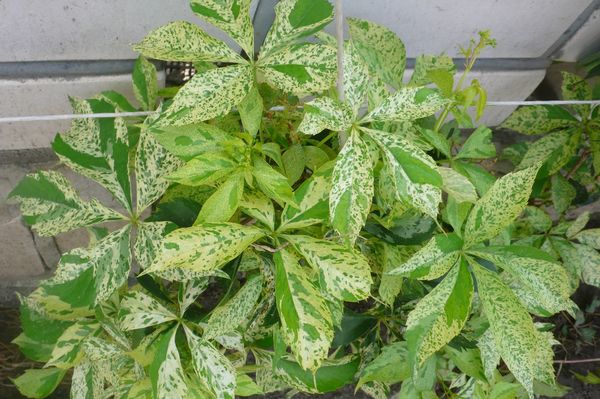
The grapes are full of primitive wildness, vitality and power. Therefore has low fertilizer requirements: not fed - will provide itself. And so much so that without limiting pruning, sprawling on the surface of the earth and rooting, is able to capture a huge space.
How and when to plant - in spring or autumn
To plant wild grapes are suitable both spring and autumn. The question of lighting is not fundamental, but in a sunny place the foliage is thick and colored brighter.
- Liana will increase the mass - and the old support will collapse under it. Therefore, it should create a strong frame or use a dried tree with the same potion. Liana does not hurt a living tree, but it will reach the roof along the growing one near the house and fit under it.
- It is important to immediately approve the border, within which the bushes grow - a strip for which the shoots and roots should not be allowed.
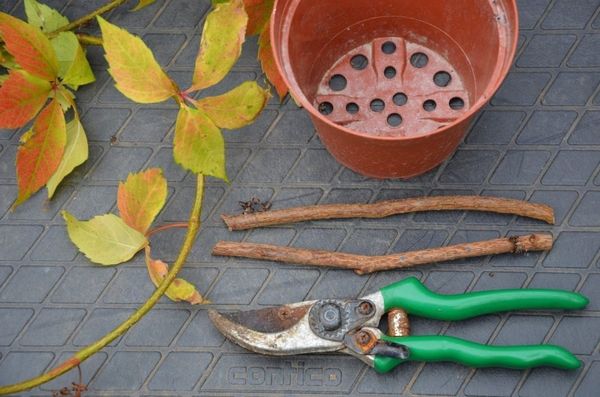
Spending time planting seeds is not worth it. At the new place it is better to use 3-5 buds, if you wish to extend the liana further - make a cutting in the right direction, prikopav lashes and leaving the top.
Landing
Cutting the semi-woody cuttings or scions of the roots, they are placed in the groove for planting or reproduction in depth about 2 cm at a distance of about 1m; covered with earth and lightly stamped on it, generously watered. Pre-rooting in the water is unnecessary.
For 1-2-year-old seedlings, a layer of drainage and a couple of handfuls of ash or superphosphate are poured at the bottom of the planting fossa. Then - abundant watering.
Further care is to:
- preventing the soil from drying out;
- weeding;
- pouring soil over bared roots;
- pruning.
Even the first wintering virgin grapes tolerate well, when frosting grows easily.
Watering developed plants need only drought, rather 10 liters per bush no more than 3-4 times per season. There is no need to apply additional fertilizing after planting; if desired, it can be mixed into the soil of furnace ash in autumn.
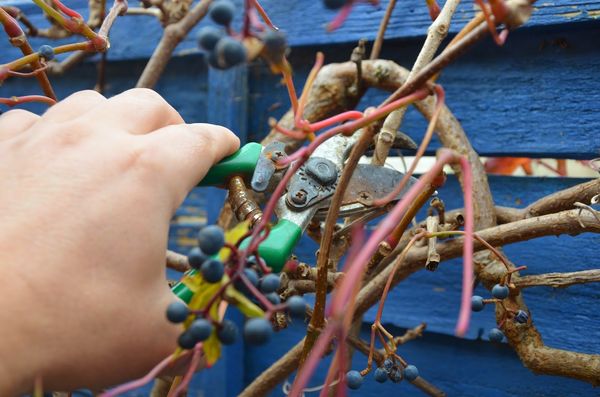
Both varieties mold and other diseases are not susceptible. In case of affection by aphids (an extremely rare phenomenon), it is washed off the leaves with a powerful jet of a hose or sprayed with greens with a ready-made insecticide.
Departure after disembarkation
The issue of haircuts, trimming - the main care for grapes-savage. Freed, he will be a scourge not only for the owners, but also for the dacha neighbors, having no idea what bans are.
In the planting season, “admonition” is necessary - patient towards lumbering shoots with a curious mustache in the right direction: on the grid or frame. Everything growing down rises, reaching at stubborn refusal to cling - tied up.
By force, the antennae torn from an unsuitable place will no longer cling, therefore it is more expedient to remove the shoot, or use it to multiply.
The general principle of forming is overshoot or overshoot. A kidney is selected from which the growth of the lash should continue, and the cut is made at a height of not more than 5 mm from it.
When the grounds and the body of the hedge are formed, only the pruning of excess branches and spring pruning performed by the whole season remain, it is a question of the hygiene of the bush.
The fear of ruining grapes by an overly radical haircut is groundless — even if cut off “on a stump”, it will grow thanks to the powerful and numerous fan-spreading roots. Therefore, it is much easier to start a culture than to get rid of it.
The partenocissus sleeps for a long time, and after the winter it is just a net of bare, thickly intertwined “wires” next to the prettier, already green neighbors. But, since the end of April, it is rapidly becoming overgrown, trimmed with care and care, it is the best decoration for the play, called the country life or the rest in a country villa.
